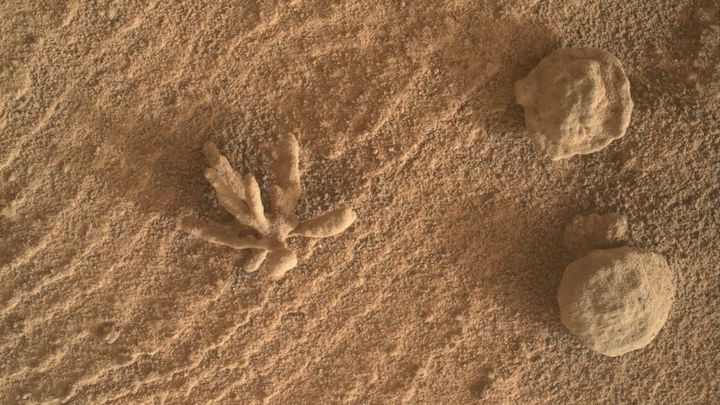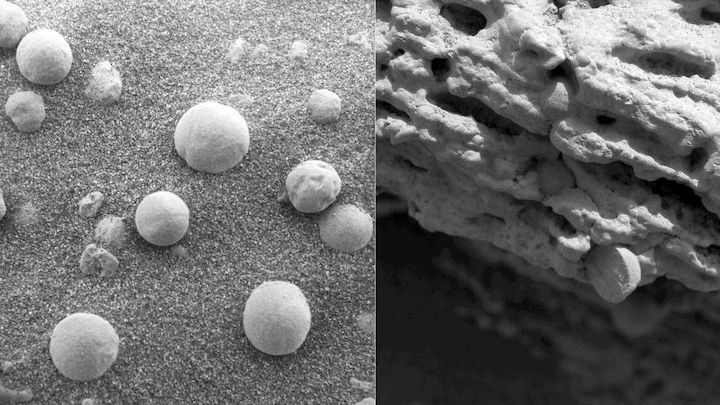25.02.2022
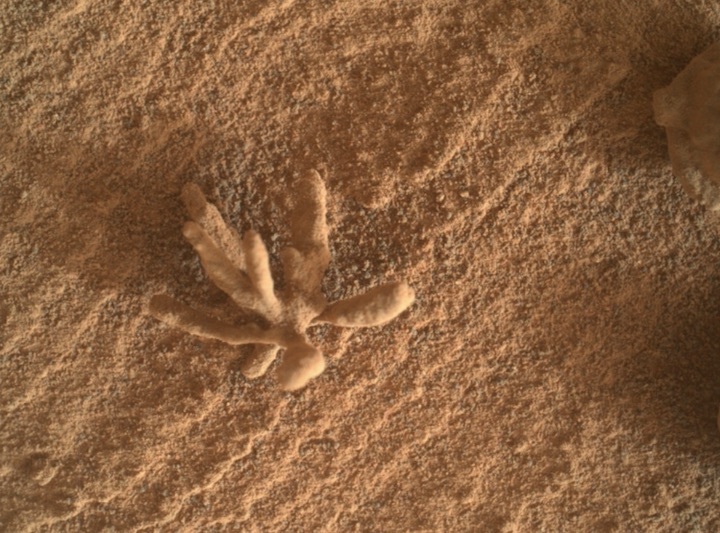
Mars Hand Lens Imager (MAHLI) photo produced on Sol 3397, February 25, 2022.
Credit: NASA/JPL-Caltech/MSSS
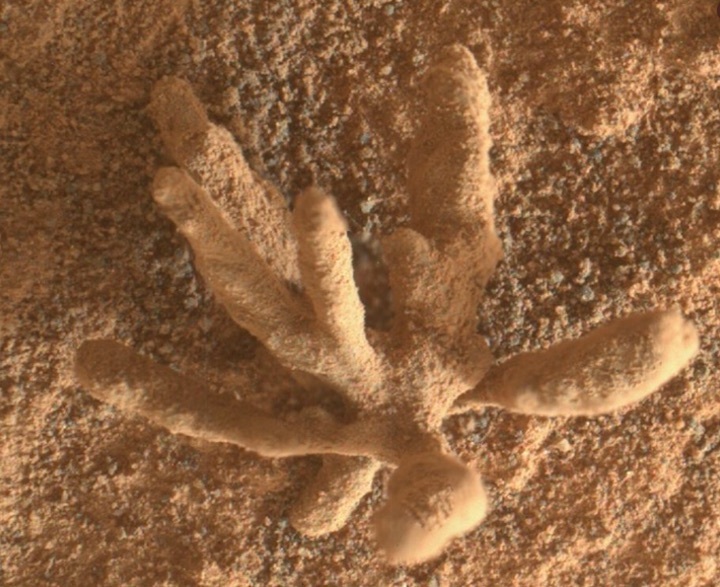
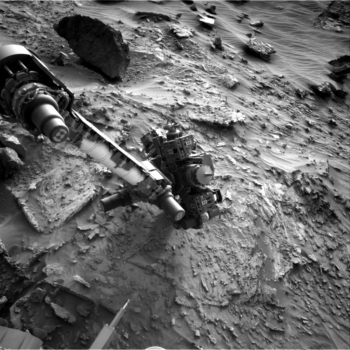
Curiosity Right B Navigation Camera photo acquired on Sol 3396, February 24, 2022.
Credit: NASA/JPL-Caltech
NASA’s Curiosity Mars rover at Gale Crater is now performing Sol 3397 duties.
Reports Mariah Baker, a planetary geologist in the Center for Earth & Planetary Studies at the Smithsonian National Air & Space Museum:
“If all goes according to plan, the rover’s drive on sol 3397 will position us at the edge of the rocks that cap Greenheugh Pediment. This drive was pushed back from sol 3395 in order to collect even more data on the sedimentary rocks in our current workspace before we leave this rock formation and enter into a new one.”
Three full hours of contact and remote science activities were planned prior to the drive.
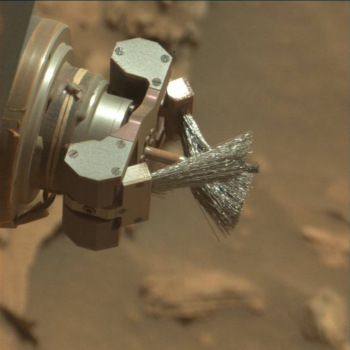
Curiosity Mast Camera Right image taken on Sol 3395, February 23, 2022.
Credit: NASA/JPL-Caltech/MSSS
Bedrock target “Scousburgh” will be analyzed with Alpha Particle X-Ray Spectrometer (APXS), the Mars Hand Lens Imager (MAHLI), Chemistry and Camera (ChemCam) Laser Induced Breakdown Spectroscopy (LIBS), and Mastcam multispectral after being brushed with the Dust Removal Tool (DRT).
APXS, MAHLI, and ChemCam LIBS data will also be acquired on a concretion feature called “Blackthorn Salt.”
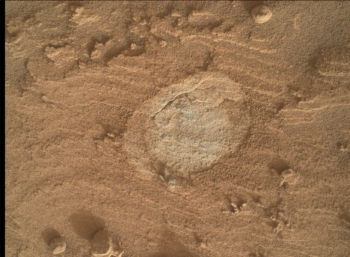
Curiosity Mars Hand Lens Imager photo produced on Sol 3396, February 24, 2022.
Credit: NASA/JPL-Caltech/MSSS
Float rock
ChemCam passive observations will be collected on a float rock called “Carn Chuinneag,” as well as on the bedrock target “Galdenoch” that was DRT’ed on sol 3395. “The latter target will also be imaged with a Mastcam multispectral to collect additional data on this patch of cleaned bedrock,” Baker adds.
Four image mosaics will provide a closer look at far-field rock targets: A Mastcam mosaic will be acquired covering rock outcrop “Auchinleck Tip,” and another will extend coverage over the Stimson formation contact.

What’s this? Curiosity Mars Hand Lens Imager photo produced on Sol 3396, February 24, 2022.
Credit: NASA/JPL-Caltech/MSSS
An interesting observation by Curiosity at Gale Crater is demanding some attention, as seen in new imagery:
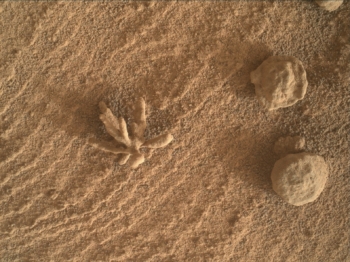
Mars Hand Lens Imager (MAHLI) photo produced on Sol 3397, February 25, 2022.
Credit: NASA/JPL-Caltech/MSSS

Curiosity Chemistry & Camera Remote Micro-Imager (RMI) photo taken on Sol 3397, February 25, 2022.
Credit: NASA/JPL-Caltech/LANL
The distant Gediz-Vallis Ridge will also be imaged with Mastcam and ChemCam Remote Micro-Imager (RMI). Two additional Mastcam images of a sand deposit in front of the rover called “The Souter” will be used to search for wind-driven sand motion during Curiosity’s stop at this location, Baker explains.
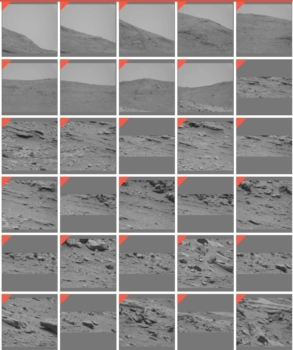
Curiosity Mast Camera Right and Left imagery taken on Sol 3395 February 23, 2022
Credit: NASA/JPL-Caltech/MSSS
Rim shots
Lastly, a set of environmental monitoring observations were scheduled before the rover’s drive, including a Navcam line of site image, Navcam dust devil movie, Navcam suprahorizon movie, and Mastcam crater rim observation.
“A Mastcam image to assess dust in the atmosphere will also be acquired on sol 3397 after the rover’s drive towards the pediment,” Baker concludes. “This plan will likely be our last opportunity to study the sedimentary rocks that built Mt. Sharp before we transition into a new geologic formation that caps the pediment, so the team made the most out of it!”

Curiosity Right B Navigation Camera image acquired on Sol 3397, February 25, 2022.
Credit: NASA/JPL-Caltech

Curiosity Right B Navigation Camera image acquired on Sol 3397, February 25, 2022.
Credit: NASA/JPL-Caltech
Quelle: NASA
----
Update: 7.03.2022
.


